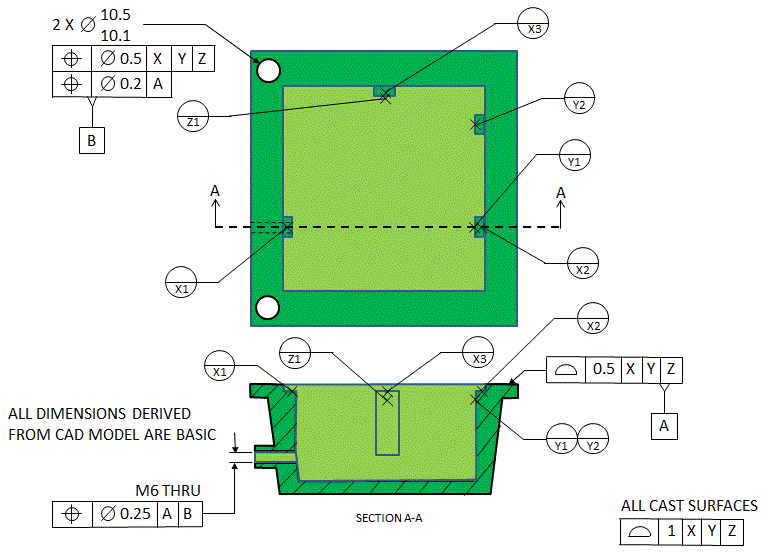Stacking from a cast surface to a machined feature
It's easy to get confused about how to stack from a cast surface to a machined feature. Consider the figure below. The cast surfaces are located to the cast datums X,Y,&Z. The machined datums are also located to the cast datums. Subsequent machined features such as the threaded hole are located back to the machined datums.
It's easy to get confused about how to stack from a cast surface to a machined feature. Consider the figure below. The cast surfaces are located to the cast datums X,Y,&Z. The machined datums are also located to the cast datums. Subsequent machined features such as the threaded hole are located back to the machined datums.
To do a stack between the threaded hole and a cast surface, the stack path first goes from the threaded hole to the machined datums using the location tolerance for the machined hole. The second step in the stack path goes from the machined datums to the cast datums using the location tolerance for the [B] holes and the profile tolerance for surface [A]. The last step goes from the cast datums to the cast surfaces using the profile tolerance specified in the general note.


